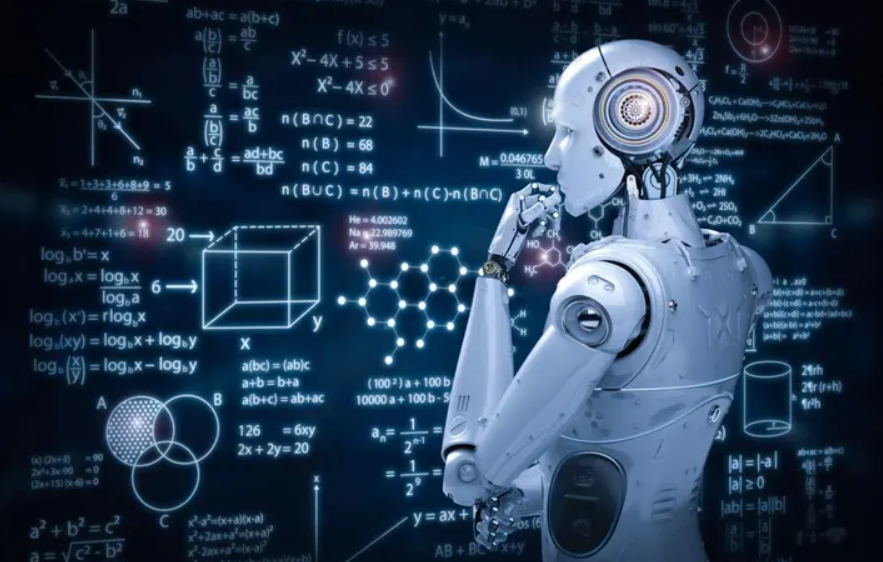Machine learning is a subset of artificial intelligence (AI) that enables computers to learn from and make decisions based on data without explicit programming. By using algorithms and statistical models, machines identify patterns, improve over time, and adapt to new data. It powers applications like recommendation systems, image recognition, and autonomous vehicles, driving advancements across various industries.
Preparing for a machine learning (ML) interview can be daunting, given the vastness and depth of the field. As the demand for machine learning experts continues to rise in 2024, being equipped with the right knowledge and the ability to answer key questions confidently is essential. Below is a curated list of the top 20 machine learning interview questions you should be prepared to answer in 2024. These questions cover both fundamental concepts and more advanced topics, ensuring you have a well-rounded understanding of the field.
1. What is Machine Learning, and How Does It Differ from Traditional Programming?
Machine learning is a subset of artificial intelligence (AI) where computers learn from data to make predictions or decisions without being explicitly programmed for each task. Unlike traditional programming, where explicit instructions are coded, machine learning models learn patterns from data, enabling them to generalise to new, unseen data.

2. Explain the Different Types of Machine Learning.
There are three main types of machine learning:
- Supervised Learning: The model learns from labelled data, making predictions or classifications based on input-output pairs.
- Unsupervised Learning: The model works with unlabeled data, finding hidden patterns or intrinsic structures within the data.
- Reinforcement Learning: The model learns by interacting with an environment, receiving rewards or penalties based on its actions, and optimising its behaviour accordingly.
3. What is Overfitting, and How Can You Prevent It?
Overfitting occurs when a machine learning model performs well on training data but fails to generalise to new, unseen data. It happens when the model learns noise or random fluctuations in the training data as patterns. To prevent overfitting, you can:
- Use techniques like cross-validation.
- Simplify the model (reduce the number of parameters).
- Apply regularisation methods such as L1 or L2 regularisation.
- Use more training data.
4. What is the Bias-Variance Tradeoff?
The bias-variance tradeoff is the balance between two sources of error that affect the performance of machine learning models:
- Bias: Error due to overly simplistic models that miss relevant relations (underfitting).
- Variance: Error due to models that are too complex, capturing noise rather than the actual pattern (overfitting). A good model strikes a balance between low bias and low variance, providing optimal generalisation to new data.
5. What are Precision and Recall? How Do They Differ?
- Precision: The ratio of correctly predicted positive observations to the total predicted positives. It measures the accuracy of the positive predictions.
- Recall: The ratio of correctly predicted positive observations to all observations in the actual class. It measures the model’s ability to detect all actual positives. A high precision model avoids false positives, while a high recall model avoids false negatives.
6. Explain the Concept of a Confusion Matrix.
A confusion matrix is a table used to evaluate the performance of a classification model. It compares the actual target values with the predictions made by the model, typically containing:
- True Positives (TP)
- True Negatives (TN)
- False Positives (FP)
- False Negatives (FN) The matrix helps calculate various metrics like accuracy, precision, recall, and F1-score.
7. What is Cross-Validation, and Why is it Important?
Cross-validation is a technique for assessing how the results of a machine learning model will generalise to an independent dataset. It involves dividing the dataset into multiple subsets, training the model on some subsets (training data), and validating it on the remaining subsets (validation data). The most common form is k-fold cross-validation, which helps mitigate overfitting and provides a more accurate estimate of model performance.

8. What is Regularization, and Why is it Used?
Regularisation is a technique used to prevent overfitting by adding a penalty term to the loss function. This penalty discourages the model from becoming too complex. Common regularisation techniques include:
- L1 Regularization (Lasso): Adds the absolute value of the coefficients as a penalty term.
- L2 Regularization (Ridge): Adds the square of the coefficients as a penalty term. These techniques help in maintaining a balance between fitting the data well and keeping the model complexity in check.
9. What is the Difference Between a Parametric and a Non-Parametric Model?
- Parametric Models: These models have a fixed number of parameters. They assume a specific form for the function mapping inputs to outputs, e.g., linear regression.
- Non-Parametric Models: These models do not assume a fixed form and can adapt to the data, allowing for more flexibility, e.g., decision trees. However, they may require more data to achieve good performance.
10. What is the Curse of Dimensionality?
The curse of dimensionality refers to the challenges that arise when analysing data in high-dimensional spaces. As the number of features (dimensions) increases, the amount of data needed to generalise accurately grows exponentially. This can lead to overfitting and increased computational cost. Techniques like dimensionality reduction (e.g., PCA) are often used to mitigate this issue.
11. Explain Principal Component Analysis (PCA).
Principal Component Analysis (PCA) is a dimensionality reduction technique that transforms high-dimensional data into a lower-dimensional form while preserving as much variance as possible. It does this by identifying the directions (principal components) along which the data varies the most, and projecting the data onto these components.
12. What is Gradient Descent, and How Does it Work?
Gradient descent is an optimization algorithm used to minimise the loss function in machine learning models. It works by iteratively adjusting the model parameters in the opposite direction of the gradient of the loss function with respect to the parameters. This process continues until the algorithm converges at the minimum of the loss function.
13. What is a Neural Network, and How Does it Function?
A neural network is a series of algorithms that attempts to recognize underlying relationships in a set of data through a process that mimics the way the human brain operates. It consists of layers of nodes (neurons), with each node representing a mathematical function. The network learns by adjusting the weights assigned to each connection during the training process, typically using backpropagation and gradient descent.
14. What are Activation Functions, and Why Are They Important?
Activation functions introduce non-linearity into the neural network, enabling it to learn complex patterns. Common activation functions include:
- Sigmoid: Outputs a value between 0 and 1.
- ReLU (Rectified Linear Unit): Outputs the input directly if positive, otherwise returns zero.
- Tanh: Outputs values between -1 and 1, similar to sigmoid but centred at zero.
15. What is Overfitting in the Context of Deep Learning?
Overfitting in deep learning occurs when a model learns to perform extremely well on training data but fails to generalise to new data. This happens due to the high capacity of deep learning models, which can learn even the noise in the training data. Regularisation techniques like dropout, early stopping, and data augmentation are commonly used to prevent overfitting in deep learning models.
16. Explain the Concept of Dropout in Neural Networks.
Dropout is a regularisation technique used in neural networks to prevent overfitting. During training, dropout randomly deactivates a fraction of neurons in the network. This forces the network to learn redundant representations and improves its generalisation capabilities by preventing it from relying too heavily on any single neuron.
17. What is a Convolutional Neural Network (CNN), and Where is it Used?
A Convolutional Neural Network (CNN) is a type of deep neural network commonly used in computer vision tasks such as image recognition and classification. CNNs use convolutional layers that apply filters to the input data, capturing spatial hierarchies in images. This architecture makes CNNs particularly effective at tasks like object detection, image segmentation, and facial recognition.
18. What is a Recurrent Neural Network (RNN), and How Does it Differ from a CNN?
A Recurrent Neural Network (RNN) is a type of neural network designed to handle sequential data, such as time series or natural language. Unlike CNNs, RNNs have connections that form loops, allowing information to persist and enabling them to capture temporal dependencies. This makes RNNs well-suited for tasks like language modeling, translation, and speech recognition.
19. What is Transfer Learning, and Why is it Important?
Transfer learning is a technique where a pre-trained model developed for a specific task is reused as the starting point for a model on a second task. This approach is particularly useful when there is limited data for the new task, as it leverages the knowledge gained from the original task to improve performance. Transfer learning is commonly used in deep learning, especially in applications like image and text processing.
20. How Do You Evaluate the Performance of a Machine Learning Model?
The performance of a machine learning model is evaluated using various metrics depending on the type of problem:
- Accuracy: The ratio of correct predictions to the total predictions made.
- Precision, Recall, F1-score: Metrics used in classification tasks to assess the balance between false positives and false negatives.
- ROC-AUC: A metric used to evaluate the performance of classification models at various threshold settings.
- Mean Squared Error (MSE) or Root Mean Squared Error (RMSE): Commonly used in regression tasks to measure the difference between predicted and actual values.
- Cross-Validation: A method to assess how the model will generalise to independent data.
Conclusion
Mastering these top 20 machine learning interview questions can significantly enhance your preparedness for interviews in 2024. These questions cover a broad spectrum of machine learning concepts, from the basics of machine learning types to the intricacies of neural networks and model evaluation techniques.
Whether you’re a seasoned professional or a newcomer to the field, understanding these topics is crucial. Remember, the key to acing any interview is not just knowing the answers but being able to explain complex concepts clearly and concisely. Good luck with your preparation!



